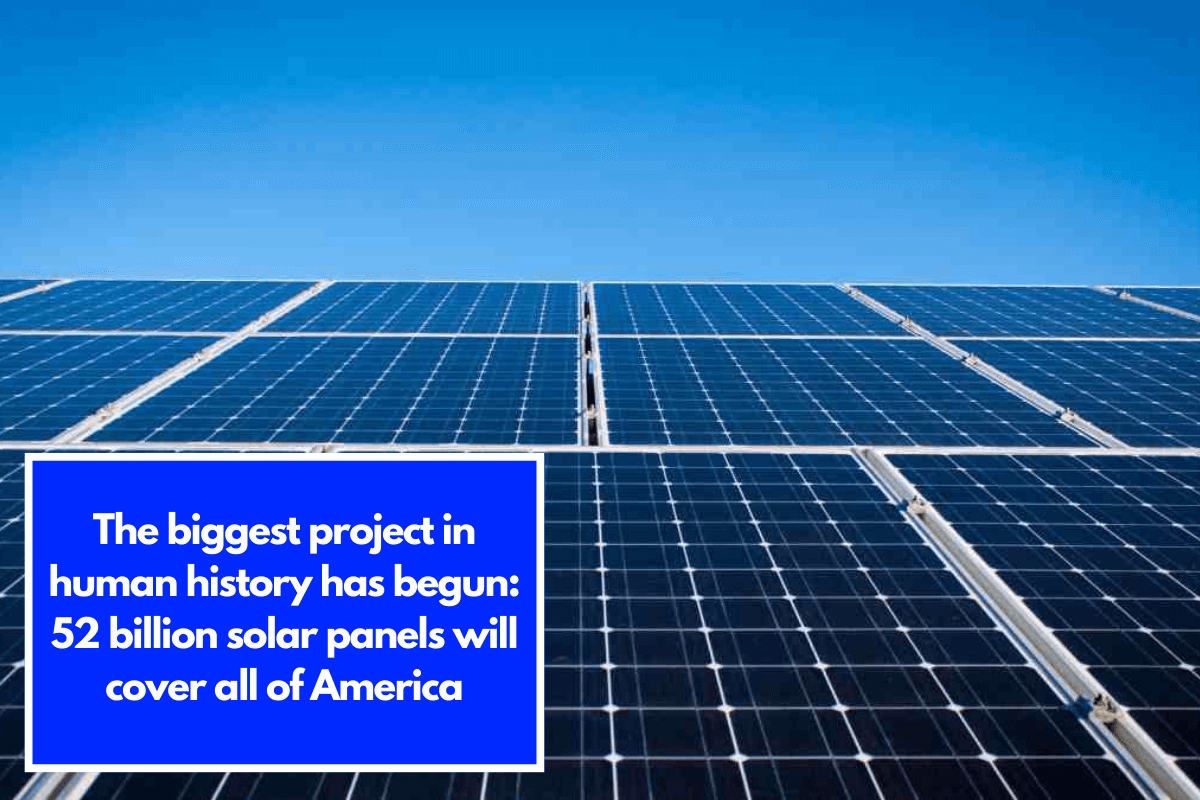A groundbreaking plan has been put forward by researchers from the Chinese Academy of Sciences, Tsinghua University, the Chinese Academy of Geosciences, and Columbia University to cover major roads around the world with solar panels.
How effective could these solar panel project be?
This big project might be able to cover up to 60% of the world’s energy needs in 2023.
In Earth’s Future, there is an article called “Roofing Highways With Solar Panels Substantially Reduces Carbon Emissions and Traffic Losses” that supports using solar technology on all 3.2 million kilometers of the world’s highways.
Researchers think that putting solar panels on highways could produce up to 17,578 TWh of power each year if they are successful. In addition to being a big step towards lowering carbon pollution, this would also be a huge step forward in making energy production more sustainable.
- Up to 52 billion solar panels could be installed.
- Potential to cover 60% of global electricity consumption for the year 2023.
- 3.2 million kilometers of highways could be utilized.
- Annual electricity generation could reach 17,578 TWh.
This ambitious project could change the way we think about using energy and being environmentally friendly. It would be cool to drive on highways that not only link towns and cities but also power them. Solar-powered highways are the first step towards a world full of clean energy.
Imagine a world where highways are not only ways to get around, but also big sources of clean energy. This dream is very close to coming true. Studies show that using solar power from roads could meet more than 60% of the world’s energy needs in 2023.
This kind of action could help balance out up to 28% of the world’s carbon emissions and even lower the number of car accidents by up to 11%.
An Astonishing Revelation
“This really shocked me,” says Ling Yao, who wrote the study. “I had no idea that highways could support the placement of such large photovoltaic systems.” These plants could provide more than half of the world’s energy needs, which would make lowering carbon emissions much easier.
An Exploratory Initiative
The idea of putting solar panels on the roofs of roads is already being tested. In the US, China, Germany, Austria, and Switzerland, pilot projects have been put into place and worked well. The first tests have shown good results, but it’s important to keep in mind that the quantitative study has some problems.
- The ability to provide more than 60% of the world’s energy needs
- Getting rid of up to 28% of the world’s carbon pollution
- Cutting the number of car accidents by up to 11%
Even though the data looks good, it’s important to keep an open mind and understand what the limits are. Going forward, it will be important to do more research and development to solve these problems and fully use the benefits of solar roads.
Researchers have written in their paper that they know climate conditions change a lot around the world. Because of what they call “spatially differentiated fluctuations,” these changes in climate change have a direct effect on how well solar roofing systems work (Jiang et al., 2014).

Offsetting Carbon Emissions
The replacement of energy that comes from fossil fuels is one of the most important ways to cut down on carbon emissions. This varies a lot on a few important factors:
- How the regional power source is set up
- Using the grid well
- Losses in gearbox
Also, the carbon footprint made while the roofing system was being built could cancel out its carbon benefits for up to 1.1 years.
Challenges in Construction and Maintenance
There are additional challenges associated with the construction of the highway system. These include:
- The estimated cost of construction
- The need for regular and vigorous maintenance
Despite these challenges, the proposed initiative presents promising data indicating that increasing the use of solar energy as a power source is a viable and beneficial endeavor.
Welcome to the future of transportation and energy! We are on the brink of witnessing one of the most groundbreaking innovations of our time: the first-ever photovoltaic highway.
Greening the Future: Towards a Solar-Powered World
As of now, the project is just exploratory study, and it may have high economic and logistical costs. However, the future looks very bright. As the world moves towards greener options, bold and new ideas like a global network of solar panels for highway roofs are becoming more and more important.
Thinking Outside the Box
The study is based on facts, but the world needs people to think outside the box more than anything. To start a big switch from fossil fuels to green energy, we need to think about big, seemingly impossible ideas.
Embracing the Fifth Industrial Revolution
As we move into the fifth industrial revolution, there has never been a stronger time for new technology. The most cutting edge green energy ideas have been made, and now the question is not “if” we will get a world network of solar panels, but “when.”
Here are some important things to think about:
- High costs for logistics and money: These problems are tough, but they can be solved with the right funding and new technology.
- Data-driven study: The project is based on solid research, which makes sure it can be done and will work.
- Radical innovation: For a healthy future, we need big ideas.
- Tech progress: We live in a time when tech progress is at its peak, which allows for these kinds of advances.
There are many obstacles on the way to a greener future, but if we keep coming up with new ideas and don’t give up, we can build a world network of solar-powered highways.











Leave a Reply